Human Factor
Human Factor
I was driving into the parking lot and parked in a designated wheelchair parking. When I went to pay I realized it was rather difficult due to non-adjustable parking meter. From my angel seated in my wheelchair, the glare from the lights above me made it difficult for me to see the screen. The number to call for assistance went straight to voicemail. I left a voicemail with my license plate and cellphone number and stated that the machine was not reading my credit card. Digital options were simply not working, and I desperately needed a more human connection for assistance.
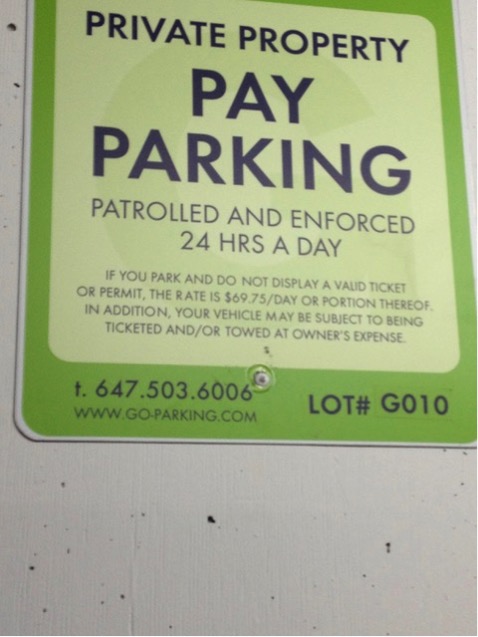
Paid parking sign with instructions and contact information. Sign that reads: Private Property, Pay Parking, Patrolled and Enforced 24 Hrs a Day. If you park and do not display a valid ticket or permit, the rate it $65.75?day or portion thereof. In addition, your vehicle may be subject to being ticketed and/or towed at owner's expense. t. 647.503.6006 www.go-parking.com LOT#G010
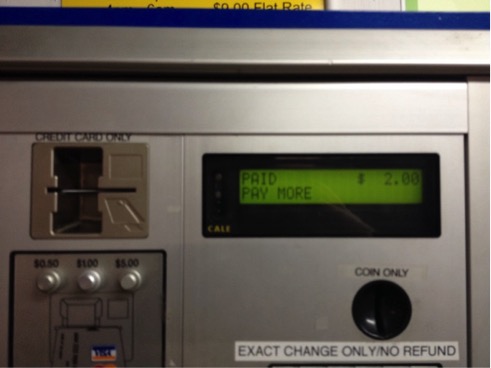
Parking payment method.
Showing where to insert credit card or change for payment method on parking meter.
I walked into the grocery store using the specific entrance, and as I was perusing the aisles, I found that there were several staff hovering over me, when all I wanted was for someone to just say “I am here if you need me”. Once I was done getting everything I needed, I found my way to the accessible cashier lane, only to find it unstaffed. So then I went into a regular line, where a customer offered to assist me by taking the groceries out of my bag from the back of my chair onto the conveyor belt. The card reader was also not adjustable. It could not be moved and it was out of my reach, so it was impossible to be able to hide my personal information when I reached over. This was yet another awkward instance where I felt I did not have autonomy.
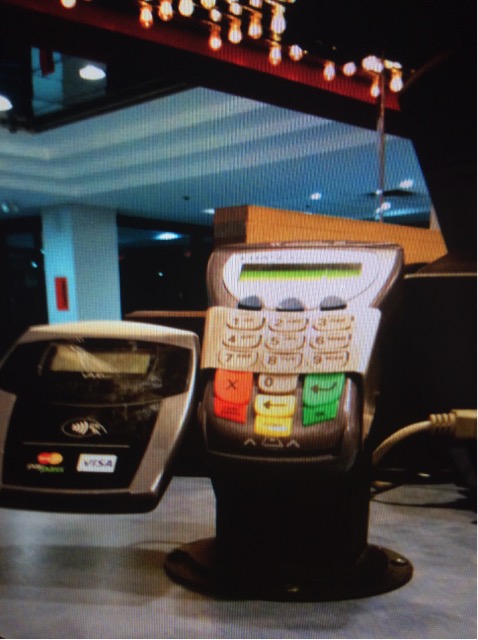
Shows non-portable card reader which glare from above lights.
No staff assisted me; it was simply other shoppers that offered to help. Common empathy of the average person rather than the attentiveness of staff has been a recurring theme of my shopping experience. Without the kindness of strangers, I often find that advocating for myself in what are monitored public spaces increases the feeling of “invisibility”. Once I was finished I decided to head into the Mall to use the accessible washroom. I found it to not be so accessible after all, as it was in fact also being used as a non-gendered and family washroom. The support handles were not adjustable, and the automatic door was not working making it much harder to open. There were many other non-accessible features of the washroom such as greatly elevated mirror that started at my forehead, as well as a hand dryer that blew into my face. The toilet seat was significantly lower than my wheelchair, which made it difficult to transfer over, as well as the support bar being too high.
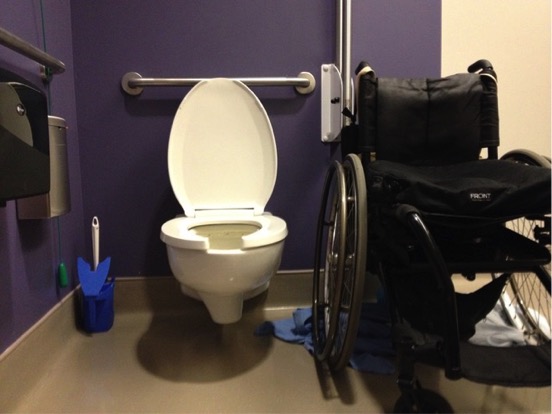
Toilet seat is significantly lower than wheelchair.
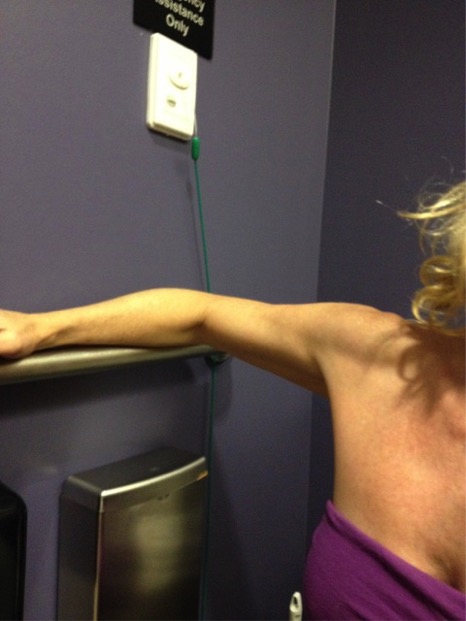
Support bar above shoulder level.
Heading back to the grocery store, I started to realize that mall closure had already begun unannounced. I noticed that the accordion gate between the grocery store and the mall had been closed, so I looked for a security guard to ask for assistance. I communicated that I needed passage through the grocery store to get to where I parked.
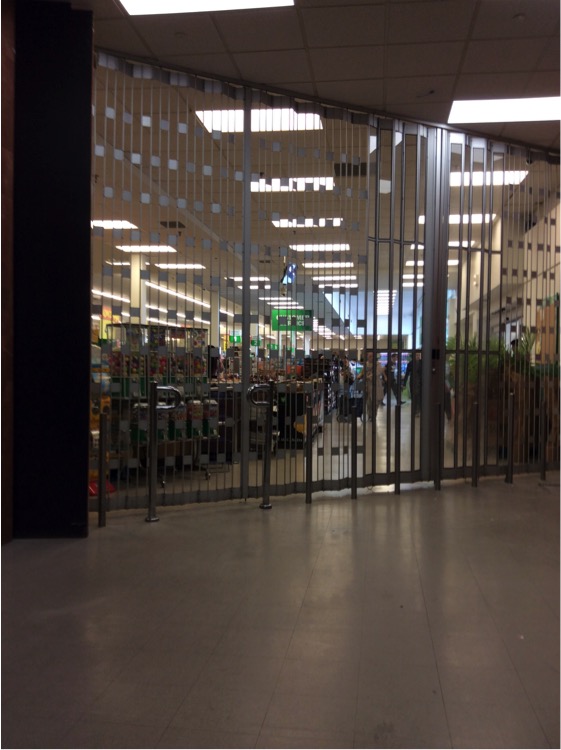
Entrance between mall and grocery store blocked by accordion gate.
He said my only option was to leave through a different exit. This was concerning to me because it was a longer route and I was very tired at this point. I can see through the now closed barricade, other shoppers still using the store on the other side. The solution was simple. I explained to the guard that I needed to go through that exit to get to my vehicle. However, he was resistant. Another customer noticed me on the other side of the gate and approached customer service on my behalf. She was refused by customer service to address the situation. She came over to speak to me, and we discussed the unexpected early mall closure, which had left me feeling unwelcome and devalued as a customer. When she couldn’t find staff to help, she resorted to simply opening the gate herself and letting me through. No special knowledge was required, just compassion. Had this been a digitally timed locking device, this would not have been possible.
I exited the mall using the grocery store entrance and made my way to my parking space. There was a car double-parked between the designated wheelchair permitted spots. I was unable to leave until another compassionate person came along and offered to move my van so that I could open my automated door and extend the ramp for my wheelchair.
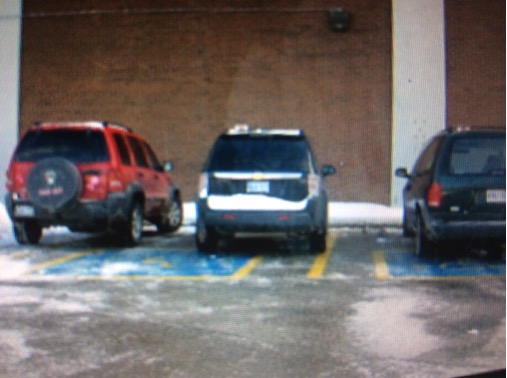
Car double parked between two designated wheelchair accessible spots.
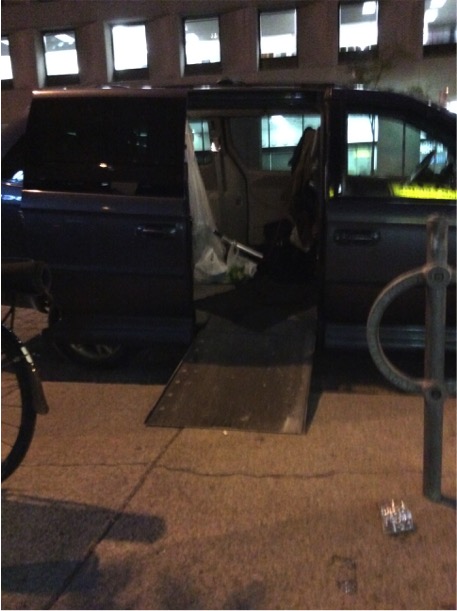
Accessibility ramp being lowered to demonstrate appropriate space needed in between vans in parking spaces.
Throughout my day I encountered several instances where getting around was difficult. Barriers to access is a common experience in my daily life and I am appreciative of the awareness and assistance of others when available. This proves that the human factor must remain in designing. When ignored it can affect all aspects of a person's physical, emotional psychological , and social interactions.